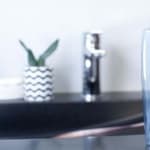 Acting in a competitive marketplace, typically impacted by low margins, liquid dairy manu-facturers relentlessly seek innovations to achieve product differentiation and a sustaina-ble business. To answer those challenges, Sidel can support the companies to switch their liquid dairy production to PET bottles and benefit from increased marketing oppor-tunities, while leveraging a cost-effective and flexible production. Guillaume Rolland, Vice President Sensitive Products at Sidel, shares his expert insights into this topic.
Acting in a competitive marketplace, typically impacted by low margins, liquid dairy manu-facturers relentlessly seek innovations to achieve product differentiation and a sustaina-ble business. To answer those challenges, Sidel can support the companies to switch their liquid dairy production to PET bottles and benefit from increased marketing oppor-tunities, while leveraging a cost-effective and flexible production. Guillaume Rolland, Vice President Sensitive Products at Sidel, shares his expert insights into this topic.How do you judge the potential of PET in the liquid dairy industry?
As the market leader in aseptic PET, Sidel can leverage a list of business successes – from notable liquid dairy companies – to explain why many industry players active in this segment worldwide have been moving their production to PET. Perfectly defined liquid recipes and pro-cessing methods, combined with the right PET bottle and aseptic packaging solutions, can en-sure maximum product integrity along the supply chain, while optimising uptime and costs. It is important to understand why PET really is an attractive packaging material for the dairy indus-try, able to offer great potential in terms of product safety, marketing opportunities, as well as flexible and cost-effective production.
Do you see an increasing PET adoption trend in the liquid dairy products (LDP) market?
Globally, the use of PET as a packaging material is expected to continuously grow within the liquid dairy sector. Traditionally packaged in carton or HDPE containers, liquid dairy products bottled in PET are forecasted to grow by 4.4% in the period from 2018 to 2020. With 13.7 bil-lion package units today, PET-packaged products are estimated to reach 14.9 billion units worldwide in 2020. The adoption of PET started in Europe nearly 20 years ago and has been deployed worldwide now, for chilled and ambient distribution drinks, for UHT milk, flavoured milk or soy milk. The trend is even bigger around on-the-go formats than around family formats. In fact, the bottle sizes up to 500 ml represent more than two thirds of those PET packages, meaning 8.3 billion units in 2018, projected to reach 9.6 billion units in 2020.
What are the main reasons for PET winning across this segment?
When packaging liquid dairy products like white milk, flavoured milk, enriched milk, plant milk, soy milk or drinking yogurt, multiple variables can influence their quality, including microorgan-isms, light, oxygen and temperature. The PET growth can be credited especially to this packag-ing material’s 100% recyclability, its excellent barrier properties and its neck and cap tightness that ensures food safety. Moreover, from transparent to opaque solutions, PET packaging al-ternatives can ensure top product protection and quality, while delivering the expected shelf life without need for aluminium foil for a more sustainable business.
Are there key business successes with LDP players that you can share?
It is more than two decades that dairy producers worldwide have been trusting PET bottles to refresh their brands, working with both refrigerated and shelf-stable products. Many of them have been working with Sidel trusting our 40-year aseptic packaging expertise and +35 years of experience in PET production. For instance, LSDH France launched its UHT white milk in PET bottle without aluminium foil in 2007. In Brasil, Jussara switched its UHT white and fla-voured milk production from carton to PET, for family and on-the-go bottle formats. Later on, this Brazilian company also launched a range of on-the-go, lactose-free products. In China, the world’s N°1 liquid dairy producer, Yili has released its 6-month shelf life premium drinking yogurt in PET bottles.



